Transcranial Magnetic Stimulation (TMS) is a noninvasive, outpatient, FDA-approved form of brain stimulation therapy. It uses magnetic fields produced from a magnetic coil to safely optimize abnormal brainwaves, the electrical connections between brain cells, so your brain can function at its best.
Magnetic qEEG-Guided Resonance Therapy (MeRT) is quantitative electroencephalogram (qEEG)-guided Transcranial Magnetic Stimulation (TMS). It is an off-label, individualized application of TMS. The qEEG maps the brain to identify your brain’s signature alpha frequency as well as locate specific brain regions that are functioning inefficiently. Based on qEEG data, a customized TMS treatment protocol is generated. Following your individually tailored treatment protocol, magnetic fields are applied to targeted areas of the brain to optimize abnormal brainwaves to your brain’s ideal brainwave frequency.
By enhancing brainwave function, TMS and MeRT reduce clinical symptoms to improve your quality of life.
Did you know the brain is composed of approximately 100 billion neurons that interact through tiny electrical oscillations, or brainwaves?
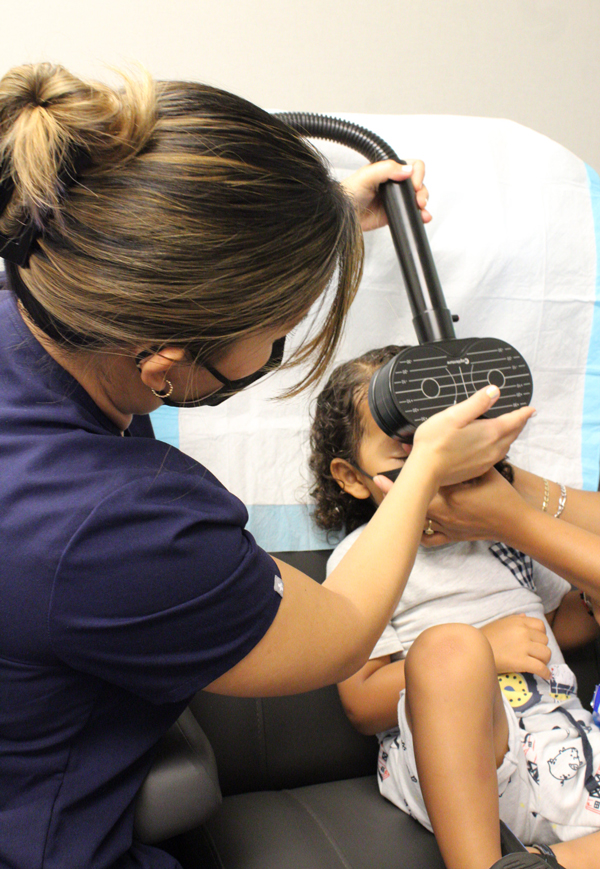
The cells in the brain can be disrupted by many factors:
Disruptions can be minimal or severe. Thanks to the neuroplasticity of the brain, brain function can be improved with a little help from science.
Did you know that we all have 4 types of brainwaves that are associated with different frequencies and states of functioning?
Alpha (8-13 Hz), Beta (13-30 Hz), Theta (4-8 Hz), Delta (0-4 Hz)
“What we’ve learned is that everyone has a unique frequency or unique signature. All of us during our waking hours, we’re looking for something called an alpha frequency (8-13 Hertz) where our brain most comfortably operates in…you might be, for example, an 11.4 Hertz brain. I might be an 8.9 Hertz brain. And somebody else may be a 10.3 Hertz brain. It’s just kind of where we’re born…whether it’s through the physical trauma of a blast injury, or the chemical trauma of years of drug use, or the emotional trauma of seeing a loved one pass away, we may find areas of the brain that are not cycling at the same rate as the rest of our cortex. …”
Dr. Erik Won, President of Wave Neuroscience, from his appearance on the Broken Brain podcast
Our TMS technology is powered by Magventure and is FDA approved for the treatment of depression.
Our MeRT technology is powered by Wave Neuroscience and is offered throughout the US at Brain Treatment Centers and BrainCare Performance Centers
TMS
Transcranial magnetic stimulation (TMS) was first developed in the 1980’s. It involves applying a magnetic coil that produces a magnetic field to influence your brain’s natural electrical activity through the principles of magnetism and electricity.
The brain is electrically active with small amounts of electricity occurring between brain cells in order to relay information. The oscillating electrical impulses between brain cells are called brainwaves. By brining a magnetic field close to the brain, the magnetic field alters the brain’s electrical impulses via electromagnetic induction.
The magnetic field generated by the coil penetrates 2-3 cm deep, which affects cortical areas of the brain. The coil pulses to produce magnetic waves that modify brainwaves to operate in an Alpha brainwave frequency, the ideal frequency for an awake, calm brain. TMS uses a “one-size fits all” treatment approach where everyone receives treatment at the same location, the left dorsolateral prefrontal cortex, at the same magnetic frequency, 10 Hz.
TMS is an evidence-based therapy that is FDA-approved to treat depression, OCD, migraine with aura.
Mert
Magnetic qEEG-Guided Resonance Therapy (MeRT) was developed in 2011. It applies the same concepts as TMS but with the added component of a quantitative electroencephalogram (qEEG) to inform and guide TMS therapy.
MeRT uses specialized qEEG technology to record and interpret brainwave activity in order to customize a TMS protocol that fits your brain’s particular needs. The qEEG individualizes TMS treatment by informing the distinct location(s) of the brain to treat as well as the optimal magnetic frequency to treat your brain at.
Due to its individualized approach, MeRT requires less intense magnetic stimulation to achieve the same, if not better, results as TMS. Using less magnetic stimulation also lessens the odds of common side effects of TMS like discomfort at treatment locations, headache, irritability, and fatigue.
MeRT is an off-label treatment for a variety of conditions.
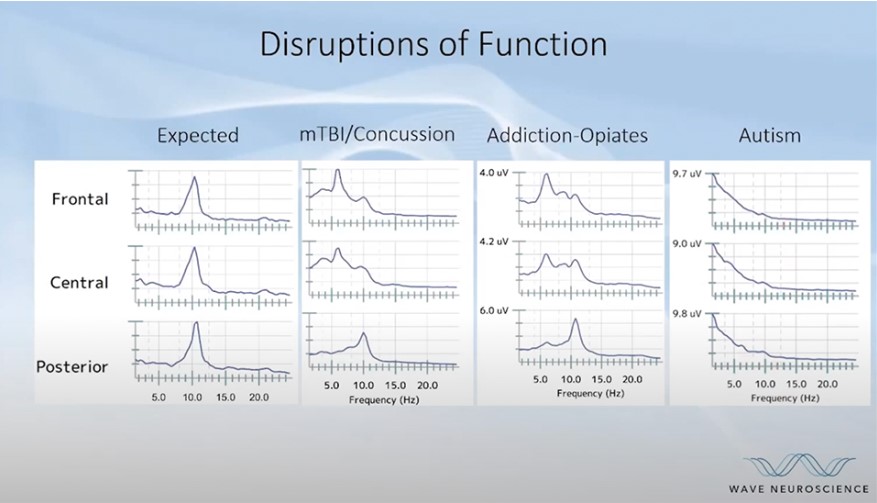
“[These are] the frontal, central, and posterior portions of the brain. We can count how many brain waves there are per second. What we expect to find is this brain clock – this radio frequency in the brain that helps us conduct information – is the same in the back as we see in the central and frontal regions: There’s one peak and it lines up and it’s the same speed.
What we might find with a patient coming into our clinics with a concussion, they have in the front of the brain a slower frequency downstream of the injury. So they’re taking information in but they’re not able to keep up with it. When we look at autism we might find that this rhythm is disrupted everywhere in the brain.
Our goal is to take that EEG and specifically guide therapy settings to be individualized to a person’s brainwave activity.”
-Alex Ring, Director of Applied Sciences at Wave Neuroscience, speaking at Autism One Conference.
At Mālama Manaʻo, we work with you to make an informed decision about whether TMS or MeRT are the right treatment for you or your loved one.
For those interested in TMS:
- Contact our patient coordinator who will answer any questions you have about TMS and collect your depression history for TMS insurance coverage.
- Meet our clinician for a one-on-one initial consultation to go over questions and discuss eligibility.
- Schedule your TMS treatment. Treatments are daily 20 minute sessions (Monday-Friday) scheduled over the course of 8-9 weeks for 36 TMS sessions total.
- Meet with our clinician every two weeks to discuss your progress and inform follow up care.
For those interested in MeRT:
- Contact our patient coordinator who will answer any questions you have about MeRT.
- Meet our clinician for a one-on-one initial consultation to go over questions and discuss eligibility.
- Complete a qEEG assessment. The qEEG is painless and takes approximately 20 minutes for compliant adults and children or up to 60 minutes for children with Autism Spectrum Disorder.
- Meet our clinician for a one-on-one consultation to review your baseline qEEG results and determine where MeRT can help.
- Schedule your MeRT treatment. Treatments are daily 30-40 minute sessions booked in 10 session increments over the course of 2 weeks (Monday-Friday). Follow-up qEEG assessments and clinician consultation are scheduled near the end of every 10 treatment sessions to assess your progress and inform continued care. The recommended length of MeRT is six consecutive weeks in order to obtain maximized, long-lasting benefits.
Common Benefits of TMS and MeRT following six weeks of continuous therapy include:
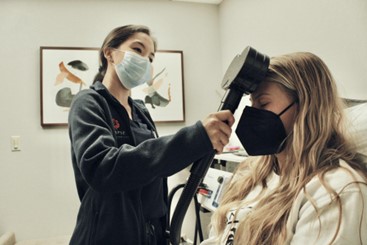
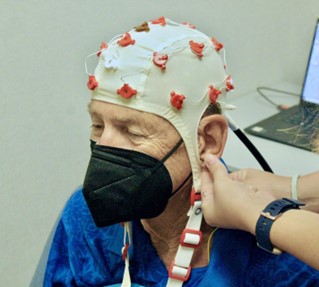
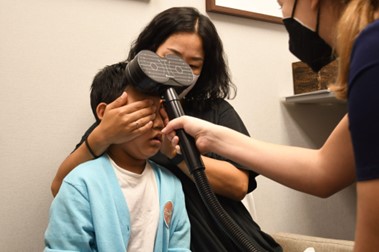
- Better sleep quality
- Increased sleep duration
- Greater ability to cope with stress
- More relaxed
- Better concentration and focus
- Improved memory
- Reduced pain
- Mood improvement
- Increased attention span
- Increased sociability
- Increased motivation
- Decreased cravings for drugs and alcohol
- Increased emotional stability
- Increased ability to adapt to change
- Increased eye contact and communication (verbal/nonverbal) for autistic patients
- More “presence” and engagement with autistic patients
Anyone with the following devices or conditions cannot receive TMS or MeRT at our clinic due to safety reasons:
Pacemaker, Defibrillator, Vagal Nerve Stimulator, VP Shunt/ Magnetic intracranial shunts, Deep Brain Stimulator, Epidural Cortical stimulator, Steel shunts/stents, Cranial metal fragments (i.e. shrapnel, excluding titanium), Cochlear implant, Aneurysm clips, coils, pipelines flow diversion, Pregnant or breastfeeding, Primary brain cancer / metastatic lesions in brain (unless palliative care), Magnetic dental implants, Implanted cardioverter defibrillators (ICD), Ocular implants, Active or recent history of seizure activity (excluding seizure due to fever or medication side effect), Recent or active substance abuse,*Bipolar Disorder Type I/II, *Schizophrenia or Schizoaffective Disorder, *Psychosis, *Active Suicidal Ideation/Behavior (*may be treated at other TMS/MeRT clinics)
Anyone with the following devices or conditions require closer protocol attention and may or may not disqualify someone from receiving cortical TMS or MeRT treatment
Titanium shunts/stents, Spinal Cord Stimulator, Unremovable hearing aids, Ferrous cortical implants, Magnetic ink tattoo, Baha Implant, High Blood Pressure.

